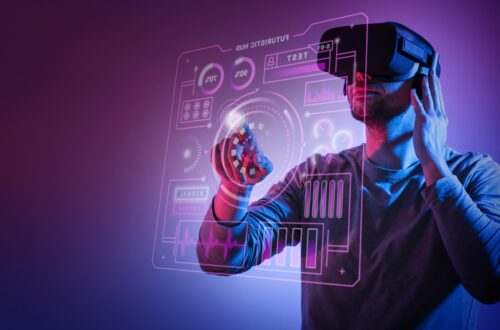When Intelligence Meets Immersion
In the fast-evolving world of technology, Artificial Intelligence (AI) and Augmented Reality (AR) are two of the most transformative forces. On their own, they’ve already changed how we see, interpret, and interact with digital and physical environments. But together—AI + AR integration—they’re creating a new era of intelligent, immersive experiences that blur the boundaries between perception and computation.
From smart glasses that guide surgeons to retail apps that personalize your virtual try-on based on your behavior, AI and AR are merging to deliver context-aware, real-time, and deeply interactive realities.
1. What Happens When AI Meets AR?
Augmented Reality enhances our physical world by overlaying digital information—images, sounds, and data—onto real-world environments. AI adds the intelligence layer—making these overlays smarter, more adaptive, and deeply personalized.
AI enables AR systems to:
-
Understand the context of a scene
-
Recognize and track objects in real-time
-
Predict user behavior and intent
-
Personalize content delivery
-
Enhance interactivity with natural language, gesture, or eye tracking
Together, they create adaptive, intelligent environments that respond to the user—not just the camera.
2. Key Applications of AI + AR Integration
a) Retail & E-Commerce
-
AI-powered AR mirrors that recommend products based on body type or facial recognition
-
Virtual try-ons for clothes, glasses, or makeup using real-time facial mapping
-
Personalized virtual shopping assistants using AI chat and AR interfaces
Result: Higher conversions, lower returns, and smarter customer journeys.
b) Healthcare & Surgery
-
AR-assisted surgeries enhanced by AI diagnostics and 3D anatomical overlays
-
Real-time guidance for medical professionals using AI-analyzed patient data
-
Physical therapy apps that track movement and provide adaptive AR exercises
Result: Precision healthcare and accelerated patient recovery.
c) Manufacturing & Industrial Training
-
AI-guided AR maintenance instructions overlaid on complex machinery
-
Real-time quality assurance with visual recognition and defect detection
-
AR training simulations driven by AI assessment models
Result: Faster onboarding, safer operations, and reduced human error.
d) Education & Learning
-
AI-curated AR learning paths for students based on performance
-
Historical or scientific visualizations in AR, dynamically tailored by AI
-
Voice and gesture interaction with intelligent AR tutors
Result: Personalized, engaging, and interactive education.
e) Gaming & Entertainment
-
AI-driven AR game characters that learn and evolve with the player
-
Emotionally responsive narratives powered by facial sentiment detection
-
Geo-based AR adventures customized in real time
Result: Deeply immersive, adaptive experiences unlike anything before.
3. Under the Hood: How AI Powers AR
-
Computer Vision: AI detects faces, objects, and environments for AR overlays
-
Natural Language Processing (NLP): Enables voice-controlled AR systems
-
Machine Learning: Powers personalization, predictions, and behavior tracking
-
Neural Rendering: Enhances realism in AR graphics using AI-driven image synthesis
-
Edge AI: Delivers low-latency intelligence on AR glasses or mobile devices
With 5G and edge computing, AI + AR can now happen in real time, on the move, and in the palm of your hand.
4. The Future:
From Smart Glasses to Spatial AI
As devices like Apple Vision Pro, Meta’s AR glasses, and Snap’s Spectacles advance, we’re entering the age of spatial computing—where digital and physical environments interact seamlessly.
Imagine:
-
Walking into a store and seeing personalized offers floating above products
-
Doctors performing remote surgeries with AI-AR overlays
-
Virtual co-working spaces with intelligent AR collaboration assistants
This is ambient intelligence—and it’s not science fiction anymore.
5. Challenges & Considerations
Despite the promise, the road isn’t frictionless:
-
Privacy & data concerns around facial recognition and real-time tracking
-
Hardware limitations (battery life, compute power, heat)
-
UX complexity—balancing usability with intelligence
-
Content creation needs to be AI-adaptive and device-compatible
But with investments surging and ecosystems maturing, AI + AR is on track to become a trillion-dollar convergence shaping how we work, learn, heal, and play.
Conclusion:
The Intelligent Layer of Reality
AI and AR together are turning technology into a context-aware, sensory-rich assistant that doesn’t just show you information—it understands and interacts with your world.
As they converge, we’re moving from mobile-first to intelligence-first experiences—where the digital world becomes as smart and tangible as the physical one.
In this new era, reality isn’t just augmented—it’s intelligent.
Visit our Website: VinesNest





